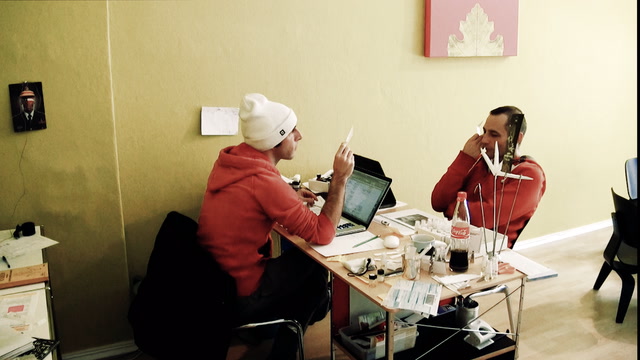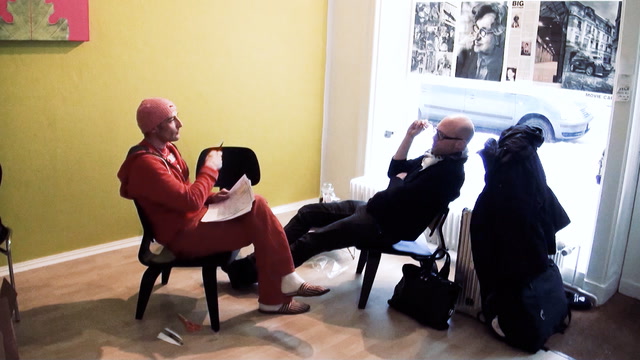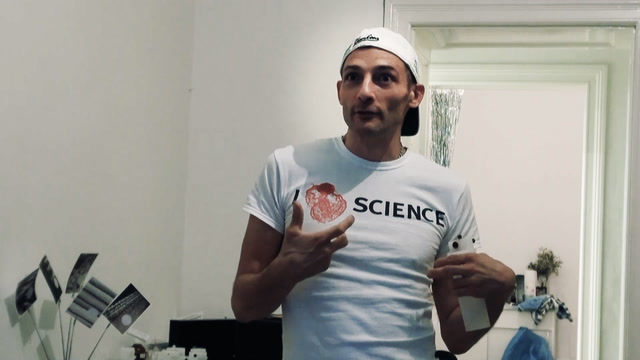Facing A Brainiac2:14

Facing A Brainiac2:14
A good briefing inspires and ignites a perfumer.
The development process for a new perfume involves coordination across various design disciplines: The creative director is not only responsible for the perfume’s name and theme. He is also in charge of preparing the perfume concept (or «brief») and coordinating the overall product fabrication. The photographer shoots the campaign photography. Packaging designers create the bottle, cap and box that will eventually house the perfume when it is finally displayed on the department store shelf. A writer composes press releases and other texts used to market the perfume. Finally, there are the perfumers who develop the fragrance. An additional challenge is that the above designers are often geographically dispersed throughout the world. How is organizing accomplished in such a context that requires coordination among all the designers? How come it does not impede their creative freedom?
In this case the independent designers and their sub-products are coordinated by means of a visual concept which consists of three collages, known as a «mood board.» A mood board is an aesthetic device that connects senses and emotion. It is able to encourage multiple conceptual interpretations while also having a directing and aligning effect. But do the perfumers really care about the concept? For Christophe it is clear that the concept goes beyond the technical brief that dictates raw materials and identifies a target consumer. The concept challenges the perfumer’s creativity. This clip reveals the perfumer’s personal attachment to the concept and its performative qualities: «It is a brainiac».
(De)briefing a scent2:36

(De)briefing a scent2:36
What is challenging about talking about scents? Can scents have structure? How many dimensions does a scent have?
A meeting with Sebastian Fischenich, the creative director of Humiecki & Graef, provides an opportunity to reflect on the state of the project. The perfumer presents alternative modifications and clarifies next steps with the creative director. In this case the two evaluate alternative scent «structures,» an initially surprising metaphor used to capture the fleeting nature of the olfactory experience.
Fragrant upcycling2:56

Fragrant upcycling2:56
Garbage smells.
Anyone with a nose knows that trash can stink. It is this truism of modern life that this clip challenges: Trash can smell nice. According to our fieldnotes Christophe casually once remarked: «The garbage often smells good. And: If you want to remake it, good luck». Hence, smelling trash is a recurring theme in a perfumer’s studio. This clip, however, shows how smelling a perfumer’s trash bin can open a discussion on sustainability in the fragrance industry and envision a future of fragrant upcycling.
Envisioning a perfumista0:54

Envisioning a perfumista0:54
Once, Christophe retrospectively envisions a persona who could wear his creation.
Perfumes are usually developed with a specific user in mind. Sometimes even stereotypes are used for briefing a perfumer. The former New York Times perfume critic Chandler Burr once even presented a parody of this type of briefing: «We want something for women. It should make them feel more feminine, but strong, and competent, but not too much…». Following Christophe’s work we hardly ever witnessed anything like this. Instead, it was the scent and its aesthetic quality that guided the design process.
Once, however, after the development of Blask had been completed for a while, Christophe retrospectively envisioned a persona who could wear this fragrance. Interestingly, his persona very much resembles the user, Mark Behnke, a well known perfume blogger, had in mind when reviewing this creation: «Blask is not a fragrance for everybody but if you are someone looking for a line that takes risks and challenges your perception of what perfume could be, Blask is something you need to try».
The title of this clip alludes to the growing enthusiasm for perfumes. A perfumista professes the culture of olfactory hedonism. Some perfumista might identify themselves as «fragraholics», «perfumaniacs» or «fragonerds» (just to mention a few labels popular within the subculture). A perfumista often wears an exotic fragrance that distinguishes itself from the middlebrow tastes of most people. One might think of Andy Warhol as a forerunner who once openly talked about his fondness for esoteric fragrances:
«Sometimes at parties I slip away to the bathroom just to see what colognes they’ve got. I never look at anything else— I don’t snoop—but I’m compulsive about seeing if there’s some obscure perfume I haven’t tried yet, or a good old favorite I haven’t smelled in a long time. If I see something interesting, I can’t stop myself from pouring it on. But then for the rest of the evening, I’m paranoid that the host or hostess will get a whiff of me and notice that I smell like somebody-they-know.»
Sometimes this passion for perfumery grows from an interest in chemistry and might rise to further practices. Some perfumista indulge in excessive perfume collecting. Others research for educational material, learn the basics of perfume creation and start as DIY perfumers. Another group of perfumista might start to write perfume reviews or publish related video content on youtube. All in all, they give rise to an increasingly discursive consumer culture. What started on the fringes eventually changes the rules of the game in the fragrance industry.
Key quotes with this tag
Images with this tag

Courtesy of scentculture.tube
Sebastian Fischenich, the creative director of Humiecki & Graef, working on the briefing.

Courtesy of scentculture.tube
Christophe Laudamiel revisiting the briefing.

Courtesy of scentculture.tube
Details in the laboratory: a spreadsheet, ingredients, and a scale.

Courtesy of scentculture.tube
Details on the creative director’s desk: modifications for a new scent.

Courtesy of scentculture.tube
Sebastian Fischenich, the creative director of Humiecki & Graef, searching for inspiration.

Courtesy of scentculture.tube
Sebastian Fischenich, the creative director of Humiecki & Graef, working on a new scent project.

Courtesy of scentculture.tube
A visual concept by Sebastian Fischenich, the creative director of Humiecki & Graef. The concept plays an active role in numerous situations (e.g. in this interaction).

Courtesy of scentculture.tube
Scent bottles on the desk of Sebastian Fischenich, the creative director of Humiecki & Graef.

Courtesy of scentculture.tube
Working on the brief: laptop, paper blotters, scents, and other office materials. A few moments later the search for papery notes is takes place.

Courtesy of scentculture.tube
Visual material exhibited in the design studio to spark inspiration.

Courtesy of scentculture.tube
Sergey Borisov, editor and columnist with Fragrantica, smelling at the Humiecki & Graef booth at Esxence in Milano.

Courtesy of scentculture.tube
Working on a scent brief: making notes. A few moments later the search for papery notes unfolds.

Courtesy of scentculture.tube
Notes on possible ingredients.

Courtesy of scentculture.tube
Tripod installation at Belepok, Zurich.

Courtesy of scentculture.tube
A special sample: The new scent for the Humiecki & Graef line is presented on the shelf at Brückner, Munich.
All Tags
- Affect
- Ambience
- Ambiguity
- Analogy
- Analyzing
- Artifact
- Associating
- Beyond words
- Briefing
- Christophe Laudamiel
- Classifying
- Consuming
- Creating
- Culture
- Deciding
- Desk work
- Embodiment
- Ephemeral
- Ethnography
- Evaluating
- Experimenting
- Hemingway
- Industry
- Ingredient
- Interaction
- Labelling
- Laboratory
- Metal
- Modifications
- Mundane work
- Orange Flower
- Paper
- Presenting
- Sense-making
- Shalimar
- Smelling
- Storytelling
- Still life
- Strangelove NYC
- Translating
- Visual
- we are all children
- Words



